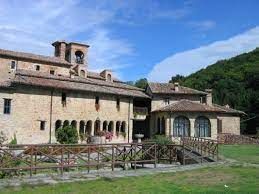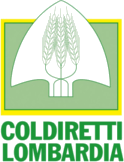
S. Alberto di Butrio hermitage is located on the first hills of the Oltrepadano Apennine beyond, in Oltrepo Pavese Staffora Valley, within the boundaries of the Province of Pavia. The complex was built in a small hamlet within the limits of Ponte Nizza, 687 mt a.s.l. And is surrounded by the mountains, the green meadows and the chestnut, oak and pine tree forests. It was S. Alberto himself, probably a descendant of the Malaspina family, who commenced the building of the complex in 1030, after moving to nearby Borrione hollow - where you can find a votive chapel dedicated to the saint - to live in seclusion. He then received a Roman church entitled to the Virgin Mary as a gift from the Marquis of Casasco (Malaspina), whose son he had healed, and here the saint and his followers could celebrate the mass. When the community was created, the hermits built the monastery of which only one wing is still existing: the so-called Chiostrino (small cloister) and the well. St. Albert was elected Abbot of the monastery and he remained such until his death in 1073. Meanwhile the hermitage which under control of the Pope had gained high reputation as a spiritual and lay landmark. Many cells and subsidiaries of the hermitage were located in the provinces of Piacenza, Pavia, Alessandria and Genoa. After St. Albert’s death the hermitage fame and power rose, the number of monks increased and it soon became a paramount spiritual retreat. Such famous people as Frederick Barbarossa and Dante Alighieri are said to have found shelter within its walls. In 1900 when the saint’s bones were exhumed subsequently placed inside a wax statue located inside St. Albert’s church, don Orione was commissioned to take care of the complex which features three main blocks: St. Mary’s parish church, originally built by St. Albert, and three adjoining and connected oratories: S. Antonio’s with its trapezoidal plan and frescoed walls, right past the main entrance door, the Santissimo Chapel, actually the left nave of the church, facing the altar and finally St Albert’s Church on the right, facing the altar. The latter oratory is probably the most important as the saint was buried here, as it now houses both his graves and bones and as it features the most remarkable frescoes in the hermitage. The oldest of the churches is St. Mary’s, built by St. Albert and sponsored by Marquis Malaspina around 1050. St. Albert’s was built later probably built before his death or shortly after.


